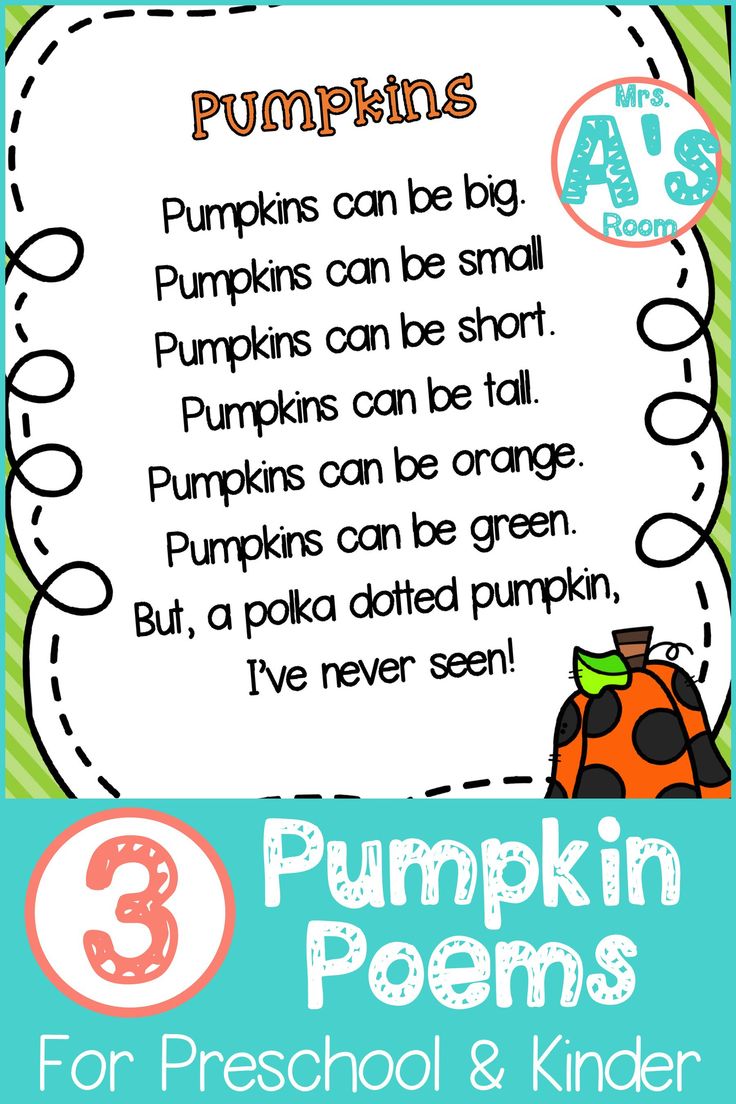
Kindergarten Pumpkin Poems: A Festive Harvest of Words
Autumn’s golden mantle paints the landscape with vibrant hues, and children’s laughter echoes amidst the crisp air. Kindergarteners, with their eager imaginations and unbridled creativity, embrace the arrival of fall with open arms. Among their many literary adventures, the pumpkin poem holds a special place, a testament to their budding literary prowess.
The Art of Pumpkin Poetry
The versatile pumpkin provides endless inspiration for young poets. Its round shape, its rich colors, and its association with the harvest season lend themselves to a myriad of poetic themes.
- Personification: Children can endow pumpkins with human qualities, creating whimsical characters that engage the reader’s imagination.
- Similes and Metaphors: Pumpkins can be compared to glowing lanterns, their interiors filled with golden light. Metaphors can transform the pumpkin into a treasure chest brimming with autumn’s bounty.
- Sensory Details: The rough texture of the pumpkin’s skin, its sweet, earthy scent, and its cheerful colors create a vivid sensory experience for the reader.
Harvesting Poetic Treasures
Poem 1: The Pumpkin’s Smile
The pumpkin wears a cheerful grin,
A bright and radiant beacon of fall’s kin.
Its eyes, two twinkling stars so clear,
Reflect the laughter of the children near.
Poem 2: The Sleepy Pumpkin
In a patch of dreams, the pumpkin lies,
Its eyelids heavy under autumn skies.
Its golden flesh, a slumbering ember,
Awaits the sun to wake its slumber.
Poem 3: The Harvest Dance
Pumpkins twirl with joy and grace,
Beneath the moon’s enchanting embrace.
Their laughter echoes through the crisp fall air,
A symphony of autumn, sweet and fair.
Cultivating Your Own Pumpkin Poems
- Encourage imaginative thinking: Engage children in discussions about pumpkins, their appearance, and their significance.
- Provide sensory experiences: Allow children to touch, smell, and taste pumpkins to inspire their senses.
- Read aloud: Share a variety of pumpkin poems, both silly and serious, to spark their creativity.
- Start with simple forms: Begin with short, rhyming poems that encourage young poets to experiment with language.
Tips for Reading Pumpkin Poems
- Pay attention to the sensory details that evoke the experience of autumn.
- Engage your imagination to visualize the pumpkin as a playful character.
- Notice how the poet uses language to create a vivid and memorable image.
Questions and Answers
- What are some common themes found in Kindergarten Pumpkin Poems?
Personification, similes, metaphors, and sensory details. - What are some tips for writing effective pumpkin poems?
Use vivid imagery, engage the senses, and explore different poetic forms. - How can children benefit from writing pumpkin poems?
It encourages creativity, imagination, and language development.
In Gratitude
Thank you for sharing in the joy of Kindergarten Pumpkin Poems. May these humble stanzas inspire you to create your own literary masterpieces. Remember, the essence of poetry lies not only in the words you write but in the emotions they evoke and the memories they create.
Please refrain from plagiarism and honor the original authors behind these works. By acknowledging their contributions, we foster a culture of respect and encourage the sharing of creative expression.
